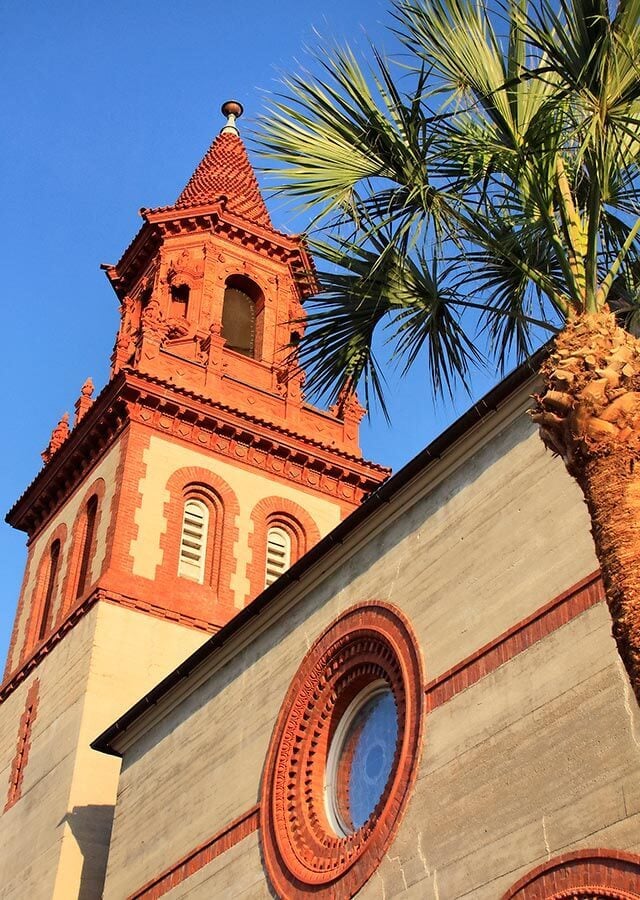
In 1513, while searching for the storied Fountain of Youth, explorer Juan Ponce de Leon happened upon this land. He called it La Florida and claimed it for Spain. Then, in 1565, conquistador Don Pedro Menendez de Aviles established a settlement here, which he named in honor of a Catholic saint. Except for a 20-year period of English rule, Florida remained under Spanish governance until the United States took control in 1821.

A few years ago, we traveled a portion of northeast Florida’s A1A Scenic and Historic Coastal Byway, a 72-mile drive that starts in South Ponte Vedra Beach and ends near Flagler Beach. Our route covered the 23-mile section that begins in St. Augustine. Along the way we found historic sites, state parks, and national monuments.

St. Augustine’s transformation into a prime vacation spot for the elite began in 1888, when wealthy entrepreneur Henry Flagler built the magnificent Hotel Ponce de Leon. The structure, designed in Spanish Renaissance Revival style, is now part of Flagler College’s stunning campus.

While on the island, we visited the nearby St. Augustine Lighthouse and Maritime Museum. Climbing to the top of the 165-foot tower rewarded us with spectacular views of St. Augustine, Matanzas Bay, and the Atlantic Ocean.

As of this writing, in the wake of Hurricane Irma’s devastation, the ferry service is suspended, but the grounds and visitor center remain open to the public.

Farther south, we stopped at Washington Oaks Gardens State Park. Elaborate formal gardens are the park’s main attraction, with exotic and native species displayed around ponds and along pathways. The park also boasts a stretch of beach known for its coquina rocks.
St. Augustine has weathered much in its long history, as the city’s monuments and wild spaces testify. Hopefully, visitors will come and perhaps cruise Scenic A1A for many years to come, supporting the Florida coast’s recovery while discovering its centuries of history and miles of coastal beauty.
Next, check out these fascinating facts you never knew about America.
The post This Is the Oldest City in the U.S.—and It’s Absolutely Beautiful appeared first on Reader's Digest.
from Reader's Digest http://ift.tt/2DSs8he
ليست هناك تعليقات:
إرسال تعليق